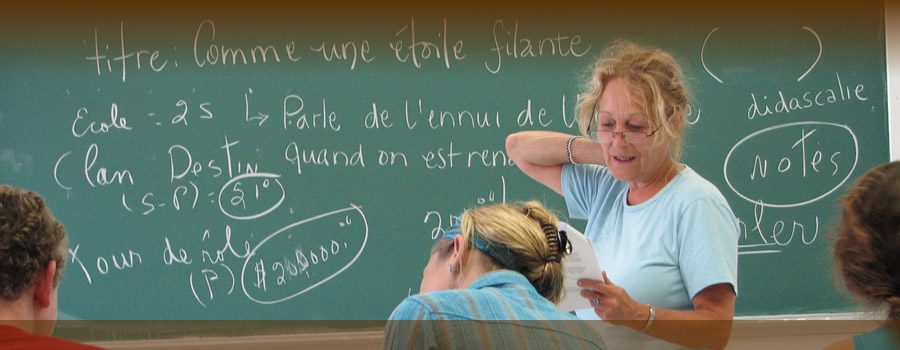 By Walter Byj
By Walter Byj
June 22, 2015
BURLINGTON, ON
In a previous article, it was reported that the Halton District School Board created the Program Viability Committee to study the implications of the French Immersion (FI) program on the English program within Halton.

The demand for French Immersion might outstrip the supply of qualified teachers. Capping student enrollment is an option the board is considering.
For Halton, 36% of those graduating from senior kindergarten entered into the FI program while the number varied by municipality, Oakville (43%), Milton (37%), Burlington (32%) and Halton Hills at 23%. The 22 person committee met seven times and after numerous scenarios, arrived at four viable options which they presented to the board of trustees. Following is a recap of the options along with implications of each.
1. Option 1: Grade 1 (early) French immersion remains a 50% French 50% English delivery model, but entry to FI will be capped. The method of capping would be determined at a later date.
In choosing this option, the board could control both programs and will be able to supply sufficient teachers for both. However, one of the board’s mandates, “challenge and choice” for all students would be compromised as capping would prohibit some students from FI. Any form of capping would raise the ire of the community.
2. Option 2: Grade 1 (early) French Immersion remains at 50% French and 50% English, however all FI programs will be delivered in single track FI schools. French Immersion will be phased out of dual track schools and no new dual track schools will be considered. The location of the single track schools will be determined at a later date.
This too could result in some form of capping as a single track FI school could reach capacity and not all would be admitted. Equally, some areas would not have enough students for FI and this would require bussing to other areas. The same would hold true for English tracked schools as some students would require bussing from their community if the nearest school was FI. This option would upset parents if capping occurred and also those where students would have to leave their community schools. The recent controversy at Pineland is a prime example.
3. Option 3: French Immersion will commence at a later entry point (mid entry); Grade 4. This will result in the delivery model of FI moving from a 50% model to at least a 80% French Immersion model. In addition the delivery of FI will occur in dual track schools only.
This option could delay the problem to a later date. It would also affect any students in grades one to three that are currently in a FI stream it could result in some students changing schools. Grandfathering these students could be an option that could be reviewed. Much would also depend on the success of the core French program that was introduced this year and no one knows if this would cut into FI for grade four and on or would increase enrolment in FI starting in grade four. This option would occur in dual track schools.
4. Option 4: French Immersion will commence at a later entry point (mid entry); Grade 4. This will result in the delivery model of FI moving from a 50% model to at least a 80% French Immersion model. In addition the delivery of FI will occur in single track FI schools only.
Unlike option three, FI would occur in FI single track schools. This could in fact create a capping situation if a particular school has a higher enrollment than their capacity. It would also lead to perhaps more busing of both FI and English program students. Also, would students below grade four be part of FI schools and then move to a English track school or would FI schools only be grades four to eight?
It should be noted that although these are the current options, the end package, after consultation with the public, could be much different.
RECOMMENDATION 2:
Be it resolved that the Halton District School Board initiate a community consultation/feedback process with the process and the method of consulting and communicating to the public coming to the Board of Trustees before the end of September 2015 for information.

If the current demand continues – some students may have to be bussed to their schools.
All trustees thanked the committee for their excellent detailed report and now look forward to the public’s input. They wanted assurance that staff would use all possible options to ensure that the public is notified through via various sources. They wanted to ensure that the public did not feel that they did not have enough time or information to contribute to the process. Associate Director Miller assured that notice in publications, letters from the principal and social media would be used in advising the community.
In addition, staff would recommend focus groups, public meetings and surveys as part of public input. Implications of boundary changes along with methods of capping would be spelled out for the public. When asked by trustee Grebenc (Burlington) if parents with children not yet in the Halton system would be advised, Miller was somewhat hesitant as he was cautious in making the consultation process too broad.
He stressed that the earliest that any changes could be made would be September 2016 and that the process could take up to three years.
The report stating process of advising the community will be made available to the trustees in September.
Previous article:
Background on French Immersion enrollment.



















